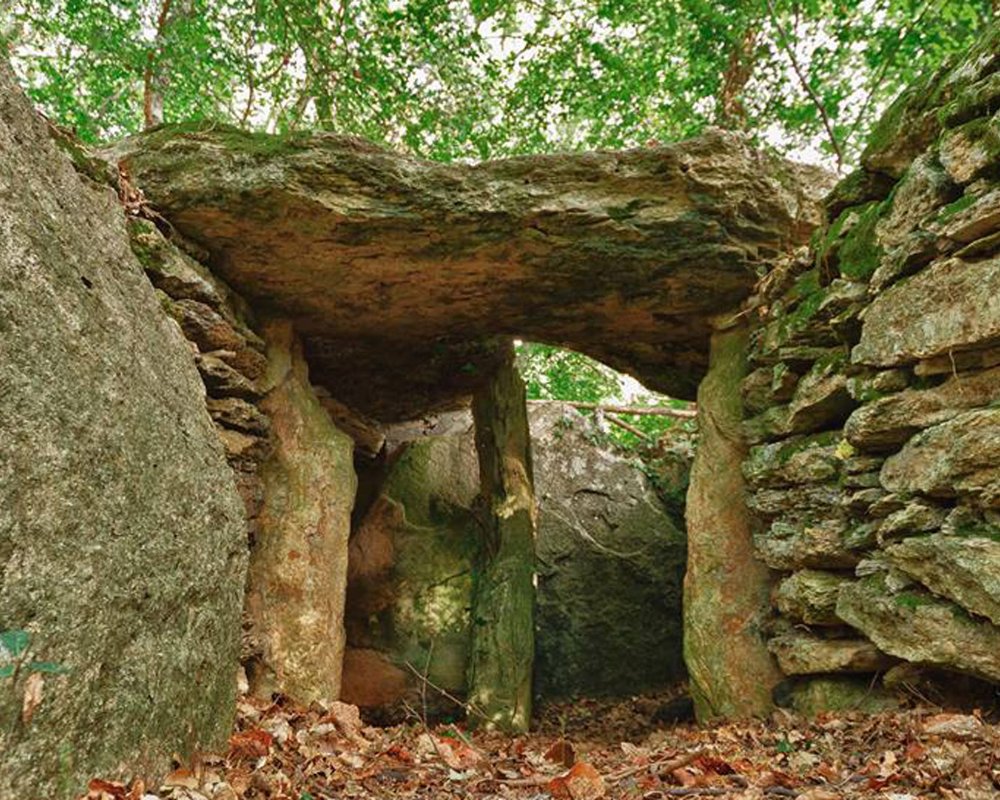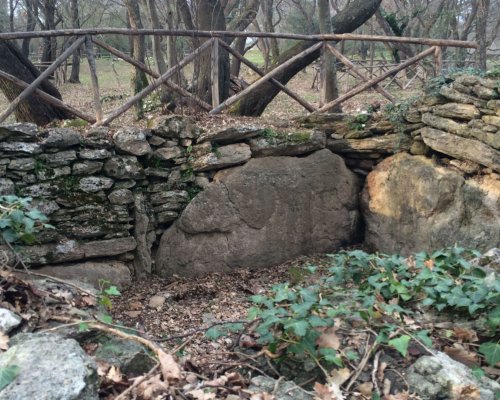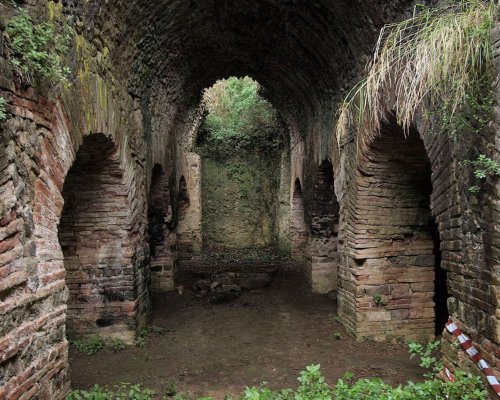Get up close and personal with the province’s prehistoric roots
The Maremma has been inhabited since prehistory and while many of its treasures have been carted off to museums, there are some incredible sites still hidden in its forests. This itinerary highlights the best examples of ancient architecture from prehistory to the Middle Ages.
We start in Saturnia, best known for its hot springs, but less appreciated for its ancient history. Leave the town via Porta Fiorentina. After about 100 metres, we arrive at Pian di Cataverna. Follow the signs for the Puntone necropolis. After 1km, a dirt road will open on the right.
Puntone was the closest necropolis to Saturnia and dates back to the town’s golden age, sometime between the 7th and 5th century BC. While tomb raiders have beat us here by about 200 years, we can still admire about 20 Etruscan burial mounds. The small tombs open into a dromos (corridor) that ends at the burial chamber. The surrounding woods are filled with oaks and sycamores that bloom drooping clusters of yellowish-green flowers in April.
Hop back into the car and continue on the Strada Saturnia-Pitigliano towards Pitigliano for 4.7km. Pass the village of Poggio Murella and follow the signs towards the cemetery for Castellum Aquarum, our next destination.
Puntone was the closest necropolis to Saturnia and dates back to the town’s golden age, sometime between the 7th and 5th century BC. While tomb raiders have beat us here by about 200 years, we can still admire about 20 Etruscan burial mounds. The small tombs open into a dromos (corridor) that ends at the burial chamber. The surrounding woods are filled with oaks and sycamores that bloom drooping clusters of yellowish-green flowers in April.
Hop back into the car and continue on the Strada Saturnia-Pitigliano towards Pitigliano for 4.7km. Pass the village of Poggio Murella and follow the signs towards the cemetery for Castellum Aquarum, our next destination.
No one really knows what Castellum Aquarum is. It’s 8 metres tall, for starters, 36 metres long and 16 metres wide. Inside, the space is divided into 10 naves. Most agree it was some sort of giant cistern, built in the 1st century BC by the Roman soldiers who had come to conquer the Maremma and rule the Etruscans, which they succeeded in doing.
Who used the 4,000 cubic metres of water held in the cistern is anyone’s guess. To muddy the waters, locals believe the Bella Antiglia, an ancient Etruscan queen, is said to have been buried here, alongside her golden carriage and four golden horses.
Now back in the car and headed northwest. Follow the signs toward SR74 and after 8km turn left on Via Panfilo. On your left is Poggio Rota, our next stop.
No one really knows what Castellum Aquarum is. It’s 8 metres tall, for starters, 36 metres long and 16 metres wide. Inside, the space is divided into 10 naves. Most agree it was some sort of giant cistern, built in the 1st century BC by the Roman soldiers who had come to conquer the Maremma and rule the Etruscans, which they succeeded in doing.
Who used the 4,000 cubic metres of water held in the cistern is anyone’s guess. To muddy the waters, locals believe the Bella Antiglia, an ancient Etruscan queen, is said to have been buried here, alongside her golden carriage and four golden horses.
Now back in the car and headed northwest. Follow the signs toward SR74 and after 8km turn left on Via Panfilo. On your left is Poggio Rota, our next stop.
Italy’s very own Stonehenge. It was discovered in 2004, so they’re still unravelling its secrets, but initial studies date the site to 2,300BC, when it was used to observe the sun and stars.
The 10 megaliths are cut from volcanic rock, separated by narrow passageways that mapped the solar rays from the summer solstice to the winter one, allowing the local Rinaldone civilization to engage in some very primitive but remarkable astronomy!
Our last stop is Vitozza. To get here, head east toward the SR74. Turn right onto Strada Provinciale Pantano/Strada Provinciale Pitigliano – Farnese and follow it for 11km. Turn right on Piazza Dogana, then left at Via Vitozza. Parking is a short distance from the site.
Italy’s very own Stonehenge. It was discovered in 2004, so they’re still unravelling its secrets, but initial studies date the site to 2,300BC, when it was used to observe the sun and stars.
The 10 megaliths are cut from volcanic rock, separated by narrow passageways that mapped the solar rays from the summer solstice to the winter one, allowing the local Rinaldone civilization to engage in some very primitive but remarkable astronomy!
Our last stop is Vitozza. To get here, head east toward the SR74. Turn right onto Strada Provinciale Pantano/Strada Provinciale Pitigliano – Farnese and follow it for 11km. Turn right on Piazza Dogana, then left at Via Vitozza. Parking is a short distance from the site.
Some 200 caves dot the cliffs in what is Italy’s largest rock settlement. Most date back to the 12th century, but some are much older. Right at the end are dozens of caves called colombari. Built by the Romans, they were for breeding pigeons.
But not all of the caves were for animals. Many of them were homes for Vitozza’s residents, some of whom lived here until the 17th century when they were forced to leave. You can explore bedrooms and living quarters, climbing tufa rock steps to the second floor.
End your tour in Sorano. A 15-minute drive from Vitozza, it’s a great place to grab a meal or a drink after your archaeological tour through the forests of the Maremma.
Some 200 caves dot the cliffs in what is Italy’s largest rock settlement. Most date back to the 12th century, but some are much older. Right at the end are dozens of caves called colombari. Built by the Romans, they were for breeding pigeons.
But not all of the caves were for animals. Many of them were homes for Vitozza’s residents, some of whom lived here until the 17th century when they were forced to leave. You can explore bedrooms and living quarters, climbing tufa rock steps to the second floor.
End your tour in Sorano. A 15-minute drive from Vitozza, it’s a great place to grab a meal or a drink after your archaeological tour through the forests of the Maremma.


